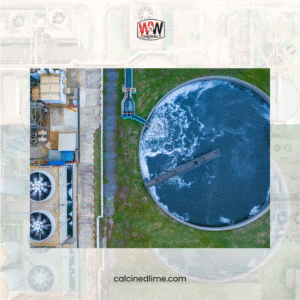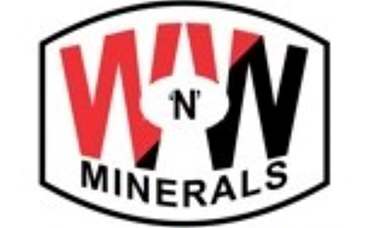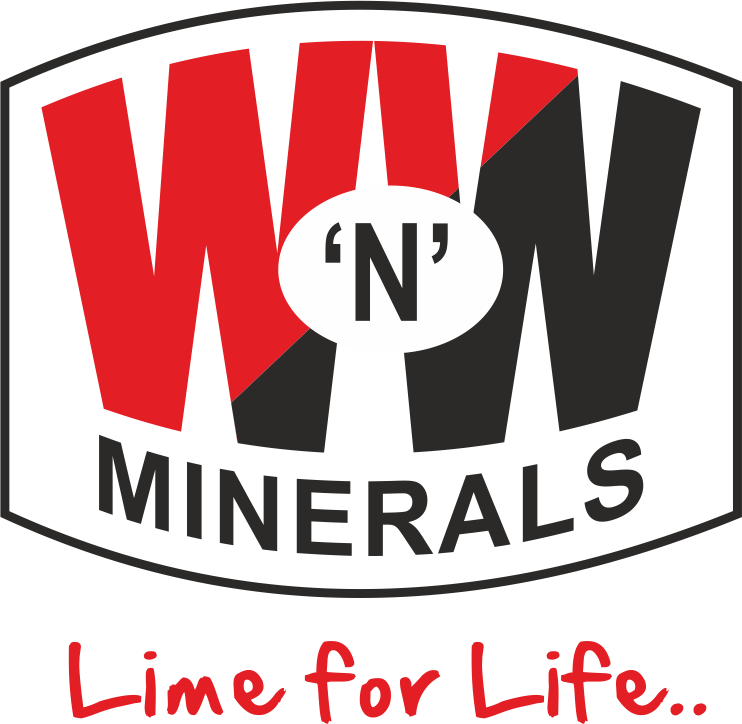Water Treatment with Industrial Lime: Cost-Effective Solutions for Chemical Plants
Environmental compliance has become a defining challenge for chemical plants worldwide, with water treatment regulations growing increasingly stringent in 2025. Industrial lime emerges as the cornerstone solution, offering chemical facilities a proven, cost-effective approach to meet discharge standards while maintaining operational efficiency. This comprehensive guide explores how industrial lime applications in water treatment deliver superior environmental compliance results for chemical manufacturing operations.

The Environmental Compliance Landscape for Chemical Plants
Regulatory Framework and Requirements
Chemical plants face mounting pressure from environmental agencies to reduce their water pollution footprint. The EPA’s latest regulations mandate strict limits on pH levels (6.5-8.5), heavy metal concentrations, and toxic substance discharge. Non-compliance penalties can reach $25,000 per day, making effective water treatment systems essential for operational continuity.
Key compliance requirements for chemical facilities include:
- pH Neutralization: Maintaining discharge pH within regulatory limits
- Heavy Metal Removal: Eliminating toxic metals like lead, cadmium, mercury, and chromium
- Total Suspended Solids (TSS): Reducing particulate matter to acceptable levels
- Chemical Oxygen Demand (COD): Lowering organic pollutant concentrations
- Phosphorus and Nitrogen Control: Preventing eutrophication of water bodies
Industrial Lime: The Superior Water Treatment Solution
Chemical Properties and Effectiveness
Industrial lime products – including quick lime (CaO), hydrated lime [Ca(OH)₂], and lime slurry – represent the most cost-effective alkaline solutions for chemical plant water treatment applications. These calcium-based compounds offer exceptional reactivity and proven performance across diverse treatment scenarios.
The fundamental chemistry behind lime’s effectiveness includes:
- Alkalinity Provision: Rapid pH adjustment from acidic to neutral conditions
- Precipitation Reactions: Formation of insoluble compounds with dissolved metals
- Coagulation Enhancement: Improved flocculation of suspended particles
- Disinfection Support: Creation of hostile environments for pathogenic organisms
Advantages Over Alternative Treatment Chemicals
Industrial lime demonstrates clear superiority over competing treatment chemicals:
Cost Comparison Analysis:
- Lime vs. Sodium Hydroxide: 60-70% lower material costs per equivalent neutralization capacity
- Lime vs. Sodium Carbonate: 45-55% reduced treatment costs for heavy metal removal
- Long-term Economics: Lower infrastructure requirements and maintenance costs
Performance Benefits:
- Higher Reactivity: More efficient neutralization per unit weight
- Dual Functionality: Simultaneous pH control and metal precipitation
- Sludge Quality: Produces more stable, dewatered sludge for disposal
- Process Reliability: Consistent performance across varying feed conditions.
Primary Water Treatment Applications in Chemical Plants
Application #1: pH Neutralization and Acid Wastewater Treatment
Acidic wastewater neutralization represents the most common application of industrial lime in chemical facilities. Manufacturing processes producing sulfuric acid, hydrochloric acid, and organic acids generate highly acidic effluents requiring immediate neutralization before discharge.
Treatment Process Overview:
- Initial pH Assessment: Continuous monitoring of influent acidity levels
- Lime Dosing Calculation: Stoichiometric determination based on acid concentration
- Mixing and Reaction: Rapid blend tanks ensuring complete neutralization
- pH Control Systems: Automated feedback loops maintaining target pH ranges
Performance Metrics:
Chemical plants utilizing White ‘N’ White Minerals’ hydrated lime achieve consistent pH neutralization from 2.0-3.0 to 7.0-8.0 within 15-20 minutes, meeting discharge requirements while minimizing over-treatment costs.
Application #2: Heavy Metal Precipitation and Removal
Heavy metal contamination poses severe environmental and health risks, making effective removal critical for regulatory compliance. Industrial lime facilitates metal precipitation through hydroxide formation, creating separable sludge containing concentrated contaminants.
Metal Removal Efficiency:
- Lead (Pb): 95-99% removal at pH 9.5-10.5
- Cadmium (Cd): 90-95% removal at pH 10.0-11.0
- Mercury (Hg): 85-95% removal with specialized lime formulations
- Chromium (Cr): 92-98% removal through precipitation and reduction
Case Study Performance:
A pharmaceutical manufacturing facility reduced lead concentrations from 15.2 mg/L to 0.08 mg/L using optimized lime treatment, achieving 99.5% removal efficiency and regulatory compliance.
Application #3: Wastewater Clarification and TSS Reduction
Total suspended solids removal requires effective coagulation and flocculation processes. Lime’s dual role as both alkaline agent and coagulant enhances particle aggregation, improving settling characteristics and clarifier performance.
Clarification Process Steps:
- Chemical Addition: Precise lime dosing for optimal coagulation
- Rapid Mixing: High-intensity mixing promoting particle collision
- Flocculation: Gentle agitation encouraging floc formation
- Sedimentation: Gravity separation producing clarified effluent
Performance Results:
Chemical facilities report 80-95% TSS reduction using lime-based clarification systems, with treated water meeting stringent discharge standards for suspended solids.
Application #4: Phosphorus and Nutrient Removal
Nutrient pollution from chemical plants contributes to eutrophication problems in receiving water bodies. Lime effectively precipitates phosphorus compounds while supporting biological nutrient removal processes.
Phosphorus Removal Mechanisms:
- Chemical Precipitation: Formation of calcium phosphate compounds
- pH Optimization: Creating ideal conditions for biological processes
- Enhanced Settling: Improved sludge characteristics for separation
- Secondary Benefits: Simultaneous removal of other contaminants
Application #5: Sludge Conditioning and Stabilization
Sludge treatment and disposal represents a major cost component in chemical plant operations. Lime conditioning improves dewatering characteristics while stabilizing organic matter and eliminating pathogens.
Sludge Treatment Benefits:
- Dewatering Enhancement: 15-25% improvement in solids concentration
- Pathogen Destruction: pH elevation eliminating harmful microorganisms
- Odor Control: Neutralization of sulfur compounds causing offensive smells
- Volume Reduction: Lower disposal costs through improved solids handling
Cost-Effectiveness Analysis for Chemical Plants
Operational Cost Considerations
Total cost of ownership extends beyond material prices to include infrastructure, labor, and maintenance expenses:
Lime System Advantages:
- Equipment Simplicity: Basic mixing and storage requirements
- Lower Energy Consumption: Minimal heating or specialized processing
- Reduced Maintenance: Fewer mechanical components and less corrosion
- Safety Benefits: Lower handling risks compared to caustic alternatives
Long-term Economic Impact:
Chemical plants report 30-45% lower total water treatment costs when utilizing optimized lime systems compared to alternative treatment chemistries.
White ‘N’ White Minerals: Your Environmental Compliance Partner
Specialized Products for Chemical Plant Applications
White ‘N’ White Minerals, based in Jodhpur’s industrial lime hub, offers specialized products designed specifically for chemical plant water treatment requirements:
High-Purity Hydrated Lime:
- Consistent Quality: >92% Ca(OH)₂ content with minimal impurities
- Optimal Reactivity: 200-400 mesh particle size for rapid dissolution
- Low Heavy Metal Content: Meeting strict pharmaceutical and food-grade standards
- Reliable Supply: Strategic inventory management ensuring uninterrupted operations
Quick Lime Solutions:
- Cost-Effective Options: Lower material costs for high-volume applications
- Customized Sizing: Tailored particle distributions for specific treatment systems
- Technical Support: Application engineering assistance for optimal performance
Technical Expertise and Support Services
Comprehensive technical support distinguishes White ‘N’ White Minerals from commodity suppliers:
- Process Optimization: On-site evaluation and system design recommendations
- Performance Monitoring: Regular analysis ensuring consistent treatment results
- Troubleshooting Support: Rapid response to operational challenges
- Regulatory Assistance: Compliance documentation and reporting support
Implementation Best Practices for Chemical Plants
System Design Considerations
Effective lime treatment systems require careful attention to design parameters ensuring optimal performance:
Equipment Specifications:
- Storage Systems: Covered silos with moisture protection and level monitoring
- Mixing Equipment: Variable-speed agitators providing adequate dispersion energy
- Dosing Systems: Automated feeders with flow-proportional control
- pH Monitoring: Continuous measurement with alarm and control capabilities
Process Control and Optimization
Advanced process control maximizes treatment efficiency while minimizing chemical consumption:
- Feedforward Control: Anticipatory dosing based on influent characteristics
- Cascade Control: Multi-loop systems maintaining tight pH control
- Adaptive Algorithms: Self-adjusting parameters responding to process variations
- Data Integration: SCADA systems providing operational visibility and optimization
Regulatory Compliance and Documentation
EPA Compliance Standards
Environmental regulations continue evolving, requiring chemical plants to maintain comprehensive compliance documentation:
Key Regulatory Requirements:
- Discharge Permits: NPDES permits specifying effluent limitations
- Monitoring Protocols: Required sampling frequencies and analytical methods
- Reporting Obligations: Monthly discharge monitoring reports (DMRs)
- Record Keeping: Detailed operational logs and treatment performance data
Documentation and Reporting Support
White ‘N’ White Minerals provides compliance support through:
- Technical Data Sheets: Comprehensive product specifications and safety information
- Performance Validation: Third-party testing confirming treatment effectiveness
- Regulatory Updates: Timely notification of changing compliance requirements
- Training Programs: Operator education ensuring proper system operation
Future Trends and Technological Developments
Advanced Treatment Technologies
Emerging technologies enhance lime treatment effectiveness while reducing operational complexity:
- Automated Slaking Systems: Precision lime slurry preparation reducing waste
- Integrated Treatment Trains: Combined physical-chemical-biological processes
- Smart Monitoring: IoT sensors providing real-time system optimization
- Predictive Maintenance: AI-driven analysis preventing equipment failures
Sustainability and Environmental Stewardship
Sustainable practices drive continued adoption of lime-based treatment systems:
- Carbon Footprint Reduction: Local sourcing minimizing transportation impacts
- Waste Minimization: Optimized dosing reducing sludge generation
- Resource Recovery: Beneficial reuse of lime-treated sludges in other applications
- Circular Economy: Integration with broader waste management strategies
Conclusion
Industrial lime represents the optimal solution for chemical plants seeking cost-effective environmental compliance through superior water treatment performance. The combination of proven effectiveness, economic advantages, and technical support makes lime-based systems the preferred choice for forward-thinking chemical manufacturers.
White ‘N’ White Minerals’ position in Jodhpur’s established lime industry ecosystem provides chemical plants with reliable access to high-quality products, technical expertise, and comprehensive support services. As environmental regulations continue tightening, partnerships with experienced lime suppliers become increasingly valuable for maintaining competitive operations while achieving regulatory compliance.
The future of chemical plant water treatment lies in optimized lime systems delivering consistent performance, operational efficiency, and environmental stewardship – positioning industrial lime as an indispensable component of sustainable manufacturing operations.
Frequently Asked Questions
How does industrial lime compare to other chemicals for pH neutralization in chemical plants?
Industrial lime offers superior cost-effectiveness compared to alternatives like sodium hydroxide, typically costing 60-70% less per equivalent neutralization capacity. Lime provides dual functionality by simultaneously adjusting pH and precipitating heavy metals, while sodium hydroxide only addresses pH. Additionally, lime produces more stable sludge for disposal and requires simpler equipment, reducing overall operational complexity and maintenance costs for chemical facilities.
What are the key factors chemical plants should consider when selecting lime suppliers for water treatment applications?
Chemical plants should prioritize suppliers offering consistent product quality (>92% purity), reliable delivery schedules, and comprehensive technical support. Key selection criteria include ISO certification, proximity to manufacturing facilities for reduced transportation costs, specialized products for specific applications (pharmaceutical-grade, food-grade), and regulatory compliance documentation. White ‘N’ White Minerals’ location in Jodhpur provides strategic advantages through established infrastructure, competitive pricing, and extensive technical expertise.
How can chemical plants optimize lime dosing to minimize treatment costs while maintaining regulatory compliance?
Optimal lime dosing requires continuous monitoring of influent characteristics, automated feedback control systems, and regular calibration of pH measurement equipment. Plants should implement feedforward control based on acid load predictions and maintain lime slurry concentrations at 5-15% for optimal reactivity. Regular jar testing helps determine minimum effective dosing rates, while advanced process control algorithms can reduce lime consumption by 15-25% while maintaining consistent discharge pH within regulatory limits of 6.5-8.5.
More About Us
Industries
Beyond Business
Reach Us
All Rights Reserved White n White Minerals

